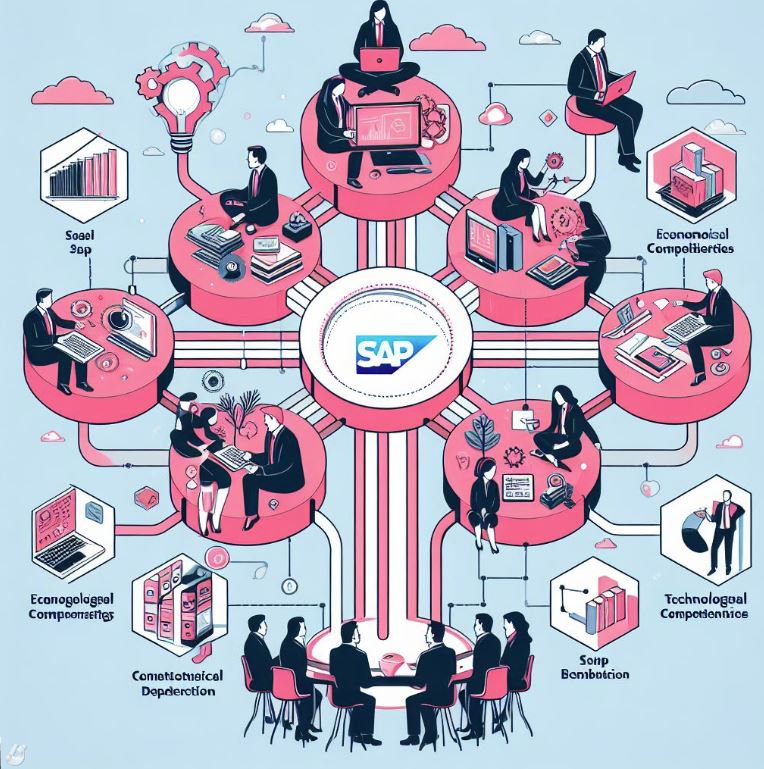SAP SAC Supply Chain, Value Chain, Ecosystem
The supply chain is an operational view of interconnected activities between source of materials or services, conversion of materials or services to products and services and distribution of those products and services to end customers. Key metrics are cycle times, activity changes e.g., sales order changes, conversion costs and customer satisfaction. Short term disruption in the supply chain can occur because of pricing changes due to inflation, logistics delays, or weather issues. Longer term disruption includes competitor adoption of AI, IoT, ML and blockchain technologies.
The value chain is the set of activities that a firm chooses to assemble in order to either focus on cost or provide a differentiating value proposition when going to a market.
An ecosystem is a set of external business models and assets that contribute to the focal (primary product or service offer) user’s value proposition to the end customer.
Adoption of ML technology for improved forecasting in the supply chain has been accelerating. Skills and software are the adoption factors. Also are incumbent systems where master and transaction data is of sufficient quality to be used as an input into a learning algorithm. The quality of data has improved and the ML algorithm has improved, along with comput to take as inputs on a variety of data formats and meta data types.
As for value chain activities they have been disrupted largely by the wide spread adoption of enterprise resource planning (ERP) solutions. Largely all processes are automated and integrated. Organizations are slim, lean and more productive. However, they lack the adoption of existing AI technologies due to worker understanding and skills and complementary infrastructure to leverage the use of the new AI technologies.
Key Premises of an SAP SAC TPM PaPM RGM Ecosytem
- Multiple actors - different organizations contribute toward the focal offers value proposition
- Economic complementarities between actors - functions performed by the actors create or enhance the user value proposition
- For example POS data from Nielsen, IRA and SPINS provide syndicated market data
- Structural technological interdependencies between actors
- APIs connect SAP with application developers to help users benefit from from SAP data
- R, Python, Regression Analytics (volume forecasting, trade planning and forecasting, trade optimization)
- APIs connect SAP with application developers to help users benefit from from SAP data
- Product SKU level planning, forecasting, actuals and variance statistics (AOP, S&OP, Trade Promotions, Trade Executions)
- The value created by an Ecosystem is limited by its weakest link, bottlenecks
- Ecosystems and ecosystem strategy is not the same as a value chain or supply chain strategy, each are distinctly different
- Many of the worlds Ecosystems are organized around a central SAP platform
- Most of the worlds top companies have a platform based strategy for value creation (Apple, Uber, Amazon, Tesla)



